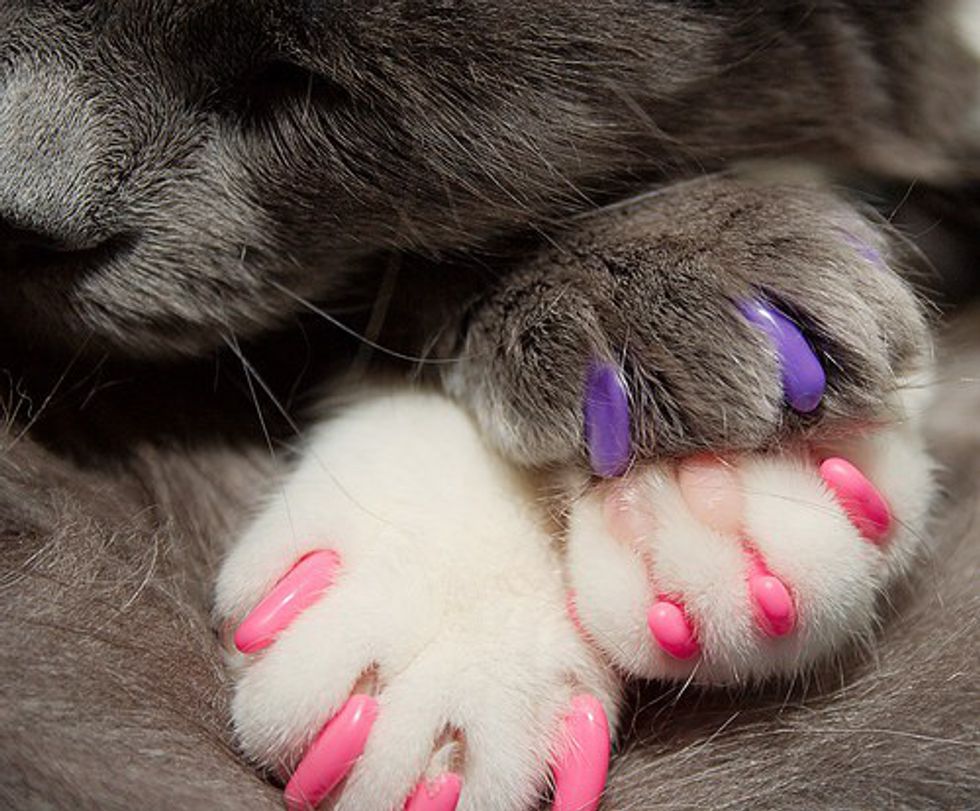Imagine if someone who you loved dearly took you to the doctor for something that you thought was going to be a routine checkup, but instead, put you under anesthesia and cut off the tips of your fingers at the first knuckle. When you wake up, you don’t know what happened, but people will say that it was “humane” because instead of cutting them off with a scalpel, it was done with a laser—but you’re still missing your fingertips, and you’re still in pain. That’s what declawing does to a cat—and it doesn’t end there.
Domestic cats’ natural scratching behavior sometimes interferes with humans’ desires and may seem like a nuisance. However, wild cats’ scratching behavior is actually a survival mechanism to keep their claws sharp in order to hunt. All cats are descended from hunters, so their natural instincts tell them to sharpen their claws. Sometimes your couch may be the victim, and you may find yourself frustrated with your torn upholstery.
Declawing was once thought to be the most effective way to keep your cat from scratching and tearing your furniture, but it’s actually linked to much worse things than a scuffed couch or a ripped pillow. According to the Humane Society of the United States, declawing can lead to “pain in the paw, infection, tissue necrosis (tissue death), lameness, and back pain. Removing claws changes the way a cat's foot meets the ground and can cause pain similar to wearing an uncomfortable pair of shoes. There can also be a regrowth of improperly removed claws, nerve damage, and bone spurs.” (As an aside, I have a bone spur in my hip, and it’s actually very painful, and not something that I would inflict on anyone if I could at all avoid it.) These problems are just the tip of the yikesberg.
Some cats will find that without their claws, they’re defenseless against things that could really hurt them, or they are still in pain and lash out. Both of these things could cause a cat to become a biter, which can be painful and inconvenient to owners and dangerous to some, including children and older people. And without their claws, cats may also experience litterbox issues—something no pet owner wants to deal with.
Because of pain from declawing as well as temporary replacement litter (typically shredded newspaper), some cats who have been declawed will refuse to use the litterbox, a problem that can last throughout their life. To make matters worse, there are some people who will put a declawed cat out in the shed or barn because of litterbox issues stemming from declawing, leaving the cat defenseless and abandoned by the ones that they thought would take care of them. That’s cruel. A declawed cat relies on humans completely, as it is unable to hunt as effectively (or at all) and may experience mobility issues due to chronic pain caused by declawing.
There are other options than declawing for controlling scratching behaviors. One short-term (4-6 weeks) solution is Soft Paws, vinyl nail caps that go over your cat’s nails. These will reduce or eliminate damage from scratching but still allow the cat to continue its normal scratching behaviors. One downside of these is that they aren’t a permanent solution and don’t correct scratching behavior, but many people find them a good solution for their pets.

Finally, in order to stop cats from scratching on furniture, you can temporarily put tinfoil over the surface you don’t want your cat to scratch. For example, a cat that scratches on a favorite armchair will be put off by tinfoil covering the sides and choose not to scratch on the armchair, and instead scratch on the scratching pad beside the armchair or in the room.
So if you’re feeling frustrated or helpless about your cat’s scratching behaviors, consider some of these solutions before declawing. Your cat will have a healthy outlet for its scratching behavior if you provide them with alternatives to your upholstery, and you won’t have to worry about the issues that come with having a declawed cat.



















